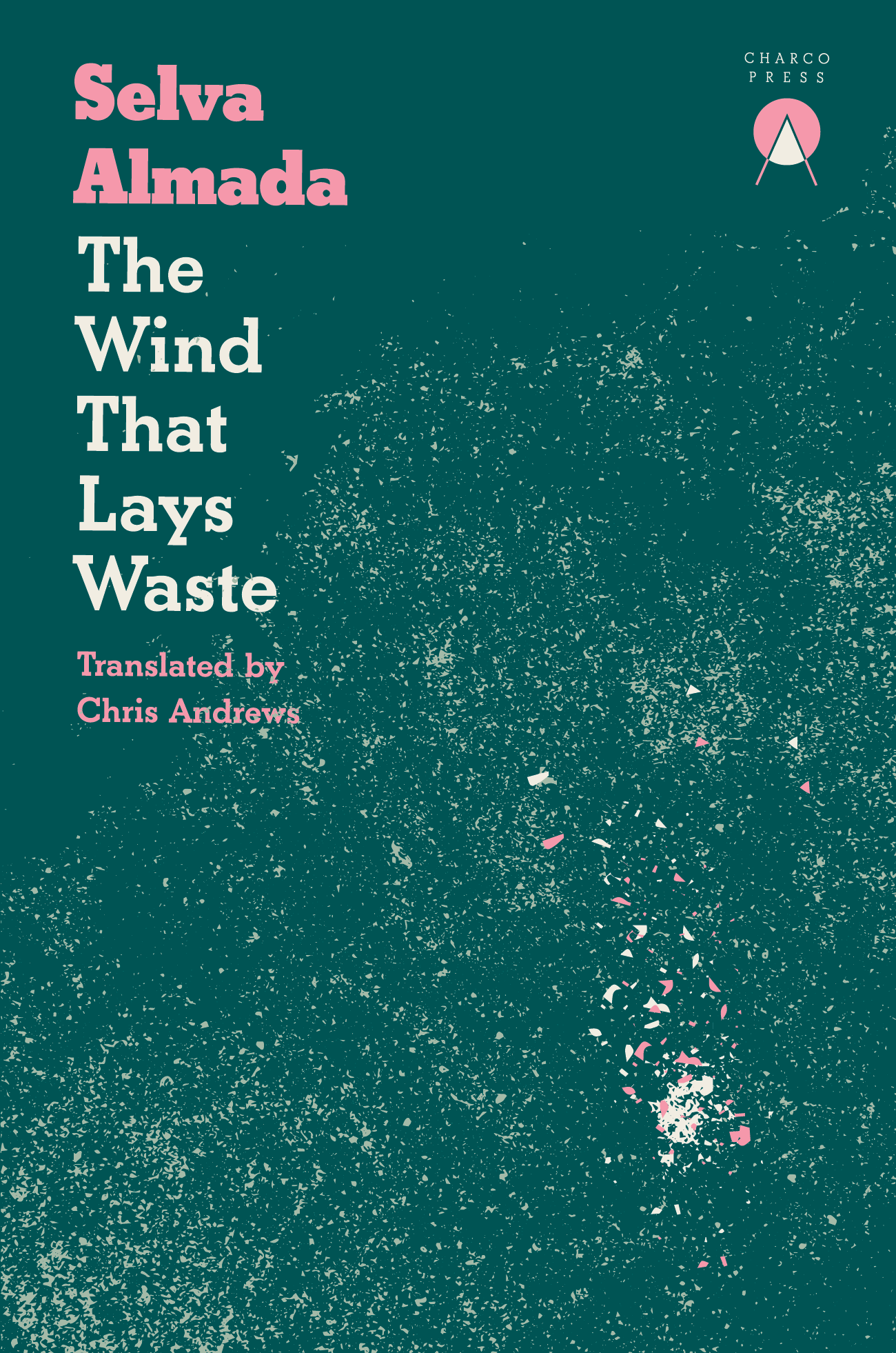Translated from the Spanish (Argentina) by Chris Andrews
It’s new Charco book time, which is always something to get excited about: I have yet to read a dud book from Charco, and the newest release, The Wind That Lays Waste, is everything I’ve come to expect from them – original, evocative, memorable, and (quite simply) a really good read. I also want to take a moment to mention what a beautiful artefact this book is: Charco’s visual identity is modern, streamlined, and instantly recognisable, and their books are as much a pleasure to hold and behold as they are to read.

This latest offering is a superb addition to the Charco catalogue; it is Selva Almada’s debut novel, and it is an eerily atmospheric account of the extraordinary events in an ordinary day. While the some of the quotes on the press release hint at traditions of magical realism, I think this does The Wind That Lays Waste a disservice, as it rather draws a veil over how original the story itself is. Where it does “fit” with a literary tradition is in the focus on the everyday, small events that have enormous consequences. The narrative revolves around four characters from two generations, who form a range of unlikely pairings. On the one hand, we have itinerant evangelist Reverend Pearson travelling across the Argentine countryside “burning with the flame of Christ’s love” and dragging his teenage daughter Leni along with him. Their relationship is strained: the righteous preacher is incapable of understanding his daughter and her need for affection from a flesh-and-blood father rather than a divine one, and there is delicious authorial irony in comments such as “Leni kept quiet. They always ended up doing what her father wanted, or, as he saw it, what God expected of them.” However, this relationship is not one-dimensional: Leni is similarly unable to see her father as a person, viewing only his flaws and the way in which he embarrasses her or irritates her with his insistence on every detail of their life – such as being stranded in the middle of the plains – being part of God’s plan (“Leni thought that if one fine day the good Lord actually came down from the Kingdom of Heaven to attend to the Reverend’s mechanical mishaps, her father would be more stunned than anyone”). Nonetheless, even Leni is eternally – if reluctantly – mesmerised by Reverend Pearson’s charismatic preaching, and wishes their relationship could be different (“This meant that he was very glad to have her with him, thought Leni, but he could never say it like that, straight out; he always had to get Jesus in there, between them”).
When the Reverend’s car breaks down on a journey across the Argentine countryside, they end up at the garage and home of “the Gringo” Brauer, a man who has “no time for lofty thoughts”, and his assistant, Tapioca, a “pure soul, still a little rough around the edges.” The four characters are forced together on a public holiday, unable to leave the remote garage, and tensions rise as a storm gathers across the dusty plains. The storm is an unabashed metaphor, but it works spectacularly well: Brauer comments that “the wind is changing”, a storm approaching, and at the same time his tranquil life with Tapioca is disrupted and turned upside down as the Reverend spreads the “wind that lays waste”, intent on saving Tapioca’s soul and claiming him for Christ: “he felt that he was an arrow burning with the flame of Christ. And the bow that is drawn to shoot that arrow as far as possible, straight to the spot where the flame will ignite a raging fire. And the wind that spreads the fire will lay waste to the world with the love of Jesus.” The Reverend is both the arrow and the wind that fans the flames, and as the flames lick higher so the heat and intensity of the day burns as the storm approaches. The storm is necessary, inevitable (“Every crack in the earth was crying out for rain”), and yet this wind that lays waste will not spare the Reverend himself, as he risks saving Tapioca only to lose Leni.
If the metaphors and pairings of characters recur through the narrative, so too do the stories of abandonment: there are echoes in the backstories of cars driving off in a cloud of dust, a lone figure left on the plain behind them, and these stories are tied up with the characters’ sense of identity: even the good Reverend’s self-presentation is based on a lie that covers up his own abandonment of his wife. Indeed, there are no mothers in the present in this story; they have been left behind or they have driven off onto the horizon. The Reverend’s own mother (who was also abandoned, this time in her pregnancy by the Reverend’s American father) appears in flashbacks, largely to explain his rebirth and spiritual calling, which comes from a place of great fear and ends with his role as peripatetic evangelist. The ending is particularly enigmatic and open to interpretation: repetition and parallels abound in The Wind That Lays Waste, but nothing is fixed: there is no “good” and “bad”, “right” and “wrong”, “tainted” and “pure”. Stereotypes are dismantled and opposites blurred in this quietly powerful and superbly crafted tale of idealism and righteousness, destruction and redemption.
Review copy of The Wind That Lays Waste provided by Charco Press